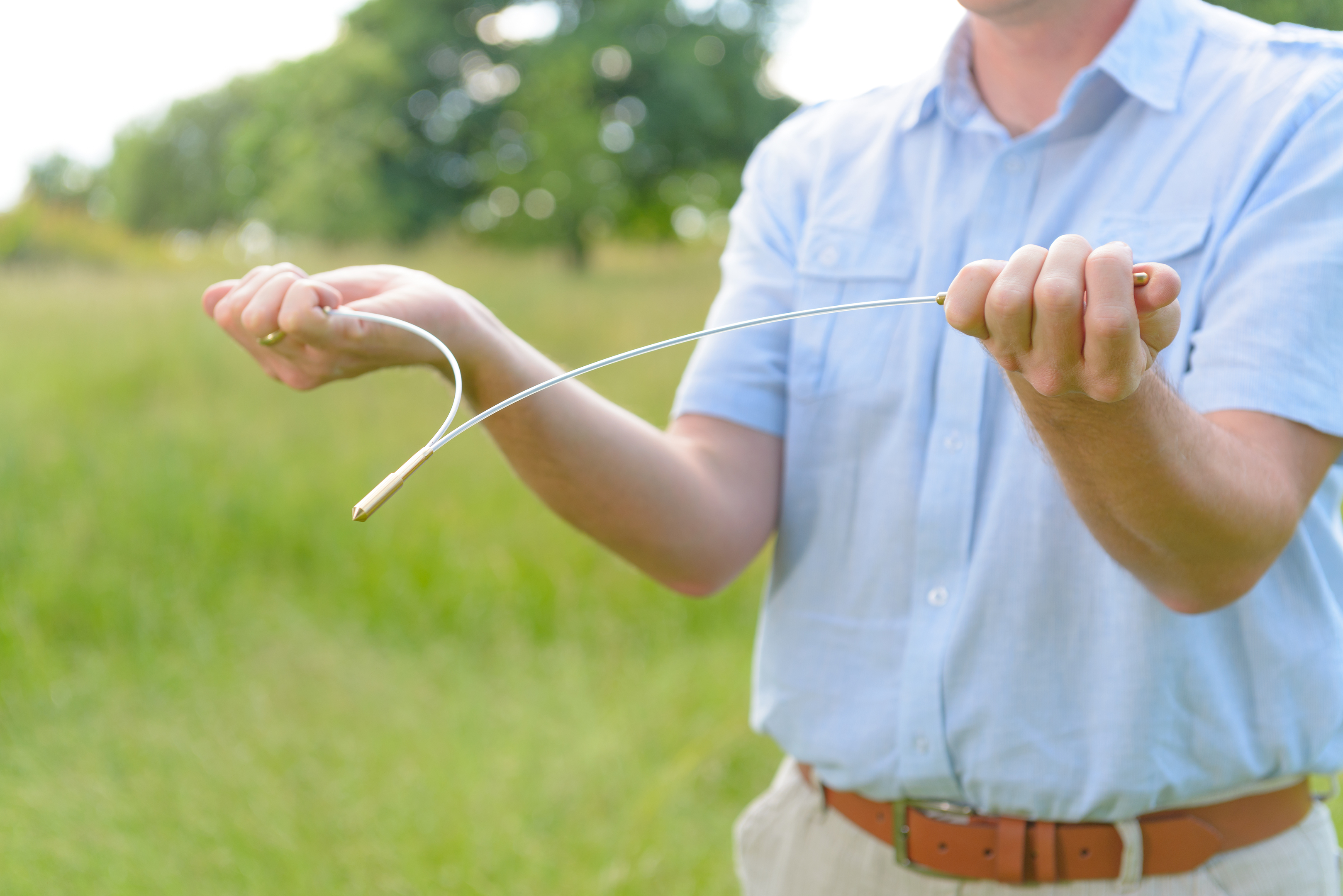
SCOTTISH Water are among several firms who have admitted that some of their engineers use dowsing rods to detect leaks or pipes.
The technique, compared to ‘magic’ or even ‘witchcraft’ by many, is scientifically unproven.
Oxford University biologist and blogger Sally Le Page started investigating the matter after her parents were visited by a Severn Water technician who appeared to use the method to locate a pipe.
The dated practice involves holding out either two small rods or one large Y shaped rod, which are alleged to twitch or move when water is ‘found’.
There is a lack of scientific evidence for its effectiveness, with tests proving that it is no better than chance and that any ‘detection’ is most likely caused by the user’s own subconscious movements.
Scottish Water said that the technique is one of many used by their operatives and ‘would never be the only method’.
Ms Le Page wrote on her blog: “You’ll be just as likely to find water by going out and taking a good guess as you will by walking around with divining rods.
“I can’t state this enough: there is no scientifically rigorous, doubly blind evidence that divining rods work. That’s how my scientist side would describe it. My non-scientist side would describe it thus: divining rods do not and will not work.
“Even now, any explanations of water dowsing rely on the supernatural, and in 2017, I am astonished to find two water companies relying on (and paying for) the supernatural to find underground pipes.”
She took to Twitter to see if others were using the technique, finding that ten of the UK’s 12 water companies do, including Scottish Water.
Responding to her tweet, the company wrote: “We can advise that these are techniques that Scottish Water use to detect pipework rather than underground leaks.”
We can advise that these are techniques that Scottish Water use to detect pipework rather than underground leaks. ^Jennifer
— Scottish Water (@scottish_water) November 21, 2017
A Scottish Water spokesman added: “Some of our water operatives use this as one way of establishing the presence of water and pipes. However, it is a very small part of the range of equipment we use for this purpose and would never be the only method.
“We use modern technology such as ground microphones, correlators, metal detectors and other devices to pinpoint the exact location of underground assets and leaks.”
The company’s initial tweet provoked a flurry of bemused replies.
Jon Simpson responded: “You’re seriously saying our water supply is in the hands of people who believe in magic sticks?”
Chris Nendick added: “Can I pay my water bill in magic beans?”
And Catherine Demetriadi wrote: “You are using dousing to find pipework????? Can I have that part of my taxes back, please? Absolutely shocked. Scandalised.”
Many water firms across the UK have distanced themselves from their comments on social media as the story spread worldwide.
Welsh Water even deleted their original response to Ms Le Page.
An Anglian Water spokesperson said: “If you don’t know where a water pipe is, you have to dig to find out. Most will take an educated guess, some may add a little superstition as well. If we thought it was costing customers money then of course we’d clamp down, but it doesn’t.
“We suggested Sally come see our real leakage tech – drones and robots – and then compare to divining rods, which won’t work. We accept the tweet wasn’t explicit enough and we were probably too jovial today but we did it honestly and it’s been taken out of context.”
They also told The Guardian: “Using dowsing rods to find leaks is an old-fashioned method. We don’t spend money on it, or issue rods to our engineers.”
Severn Trent told the Mirror: “We don’t issue divining rods to our engineers but we believe some of our engineers use them. As long as the leak is found and repaired quickly, by whatever means, we’re happy and so are our customers.”

Enjoy the convenience of having The Sunday Post delivered as a digital ePaper straight to your smartphone, tablet or computer.
Subscribe for only £5.49 a month and enjoy all the benefits of the printed paper as a digital replica.
Subscribe